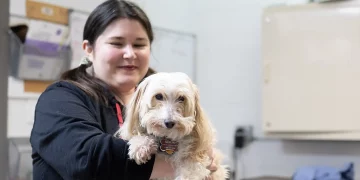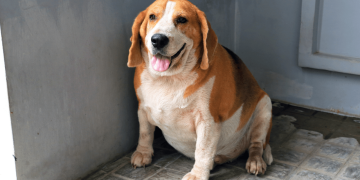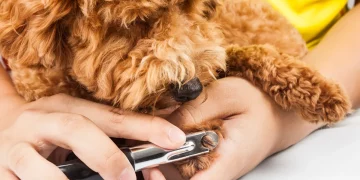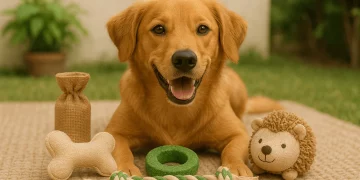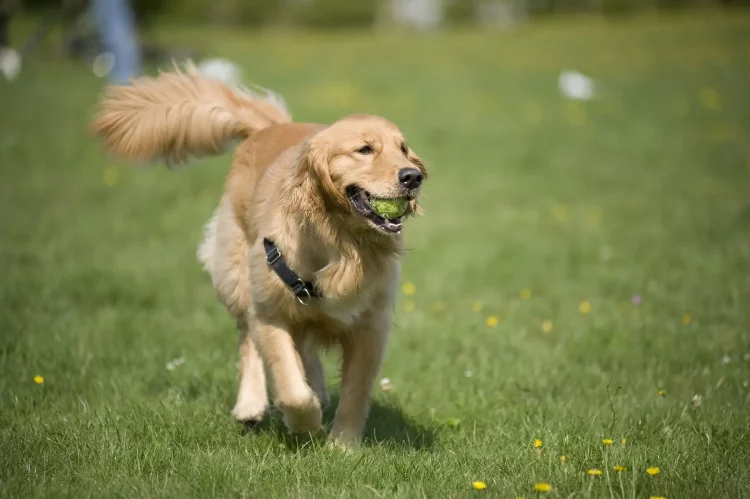Pets communicate with us in many ways, often through subtle body language that we may overlook. Understanding their non-verbal cues is essential to building a stronger bond and ensuring their emotional and physical well-being. Whether it’s the position of their tail, the way their ears move, or the expression on their face, your pet is always sending signals that, if interpreted correctly, can help you understand their feelings and needs. In this guide, we will explore common body language signs in pets and what they truly mean, so you can better interpret your furry companion’s emotions.
1. Tail Wagging: More Than Just Happiness
One of the most recognizable signs of a pet’s emotion is tail wagging. While many people associate a wagging tail with happiness, this simple action can actually convey a wide range of emotions.
1.1. Happy and Excited Wagging
When a pet is excited or happy, their tail will usually wag in a wide arc, often with their whole body involved. This kind of wagging is typically fast and may be accompanied by a wiggly body or jumping. If your dog approaches you with this type of tail wagging, they’re showing joy and a strong desire to interact.
1.2. Alert or Curious Wagging
A more subtle wagging motion, where the tail is held still but flicks or wags slowly from side to side, can indicate curiosity or alertness. Your pet may be focused on something and trying to understand the situation better.
1.3. Fear or Anxiety
A tail that is wagging low and slowly, or tucked between the legs, often signals fear or anxiety. In this state, pets may feel threatened or nervous. It’s important to reassure them and remove whatever is causing the stress, if possible.
1.4. Aggressive Tail Wagging
A slow, stiff wagging motion with the tail held high can signal aggression or dominance. In this case, the wagging is not friendly, and your pet might be feeling threatened or territorial. It’s important to approach with caution in this situation.
2. Ears: Listening to Their Emotional State
Your pet’s ears can tell you a lot about how they’re feeling. Dogs and cats both use their ears to convey their emotions, and the direction they point can provide vital clues to their mood.
2.1. Erect Ears
When a pet’s ears are standing up and facing forward, they’re typically alert and paying attention to their surroundings. This can signal curiosity, interest, or excitement, especially if their ears are focused on something specific, like a person or a noise.
2.2. Flattened Ears
If your pet’s ears are pressed flat against their head, this is often a sign of fear, anxiety, or submission. It may also signal that your pet feels threatened or is trying to protect itself. If you see your pet’s ears flattening in response to a specific stimulus, they may be feeling stressed or unsafe.
2.3. Relaxed Ears
When your pet’s ears are relaxed and positioned naturally, it indicates comfort and contentment. They are not stressed or on high alert, and they feel secure in their environment.
2.4. One Ear Up, One Ear Down
This combination can signal confusion or uncertainty. Your pet may be trying to listen to something with one ear while feeling unsure or unsettled about the situation. This is a neutral position and is worth observing in context to determine how your pet is feeling.
3. Eyes: The Window to Their Emotions
A pet’s eyes can convey a wealth of emotions, from happiness and affection to fear and aggression. Paying attention to your pet’s eye movement can help you understand their emotional state more clearly.
3.1. Soft, Relaxed Eyes
When your pet’s eyes are soft and relaxed, it usually means they’re comfortable and content. In dogs, this may be accompanied by a slightly squinty expression or a soft, “sleepy” look. For cats, relaxed eyes often signal that they feel safe and trust their surroundings.
3.2. Dilated Pupils
Dilated pupils in both dogs and cats can signal excitement, fear, or even aggression. If your pet’s pupils are dilated, it’s important to assess the situation carefully. For dogs, this may occur when they are excited or anxious, while for cats, dilated pupils are often seen when they are startled or hunting.
3.3. Narrowed Eyes
Squinting or narrowing of the eyes can indicate that your pet is in a relaxed or calm state. However, in cats, particularly, this can also be a sign of aggression or irritation if accompanied by other body language signs, such as a tense body or flicking tail.
3.4. Staring
A direct, unblinking stare from a pet can be a sign of dominance, aggression, or challenge. In many animals, prolonged eye contact can be seen as a threat. However, in a calm pet, a gentle stare might just indicate they are observing or focusing intently on something.
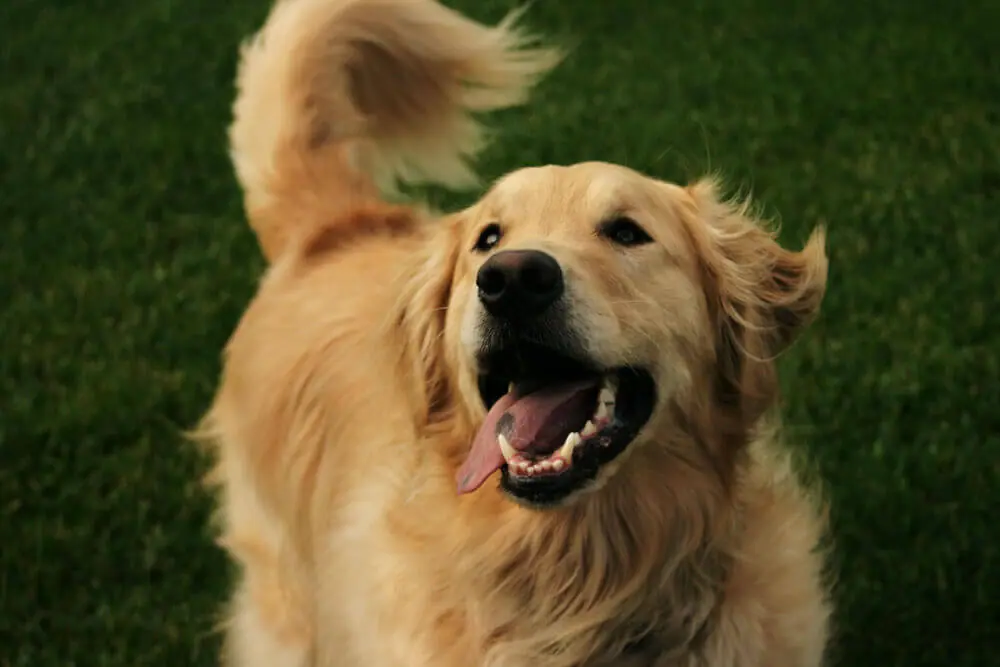
4. Body Posture: What Their Whole Body Tells You
Your pet’s entire body can offer clues to their emotional state. Body posture is one of the most direct ways animals communicate non-verbally with us.
4.1. Relaxed Body Posture
When your pet is in a calm, relaxed state, their body will be loose, and they may rest in a comfortable position. A dog with a relaxed body posture will often be lying down with their legs stretched out or curled comfortably. Similarly, a relaxed cat might sit or lie in a way that suggests they feel safe.
4.2. Tensed Body
If your pet’s body is stiff and tense, it may indicate that they are on high alert or stressed. A tense posture, with a slightly raised hackles (in dogs) or a tightly held body (in cats), suggests that they are ready to react to a situation. This can be a sign of fear, aggression, or even territorial behavior.
4.3. Play Bow (Dogs)
When dogs bend their front legs while keeping their hind legs straight, this is a classic “play bow,” signaling that they want to engage in play. It’s a friendly gesture that encourages interaction and shows that your pet is in a good mood.
4.4. Purring or Kneading (Cats)
Cats often knead with their paws on soft surfaces or purr when they feel relaxed and content. If your cat kneads on your lap or purrs while being petted, it’s a strong sign of affection and comfort.
4.5. Hiding or Curling Up
Pets that hide, curl up, or try to retreat to a quiet space are often signaling that they are stressed, anxious, or unwell. If your pet is usually social but suddenly seeks solitude, it could indicate discomfort or fear.
5. Vocalizations: What Their Sounds Mean
While body language is essential, pets also use vocalizations to communicate with you. Each sound may have a different meaning, depending on the context.
5.1. Barking (Dogs)
Dogs bark for various reasons, including alerting you to danger, seeking attention, or expressing excitement. However, persistent barking could indicate anxiety or frustration, especially if it’s directed at specific situations (such as being left alone).
5.2. Meowing (Cats)
Cats meow to get attention, ask for food, or express dissatisfaction. A loud, demanding meow may indicate hunger or frustration, while a soft, purring meow often signifies contentment and affection.
5.3. Whining (Dogs)
Whining is often a sign that your dog is anxious, in pain, or seeking attention. It can be a way for them to communicate their discomfort or needs. In some cases, whining can also be a sign of distress or frustration.
5.4. Hissing (Cats)
A hissing cat is usually a sign of fear, anger, or frustration. When a cat hisses, it’s often a way of saying “stay away” or “I feel threatened.” If your cat hisses at something or someone, give them space to calm down.
6. Conclusion
Understanding your pet’s body language is key to ensuring their well-being and strengthening the bond between you and your furry friend. By recognizing the subtle cues in their tail, ears, eyes, body posture, and vocalizations, you can more accurately interpret their emotional state. This not only helps you respond to their needs effectively but also builds trust and enhances the communication between you and your pet. Remember that every pet is different, so paying attention to their individual behaviors and reactions will help you become more attuned to their unique way of communicating.













